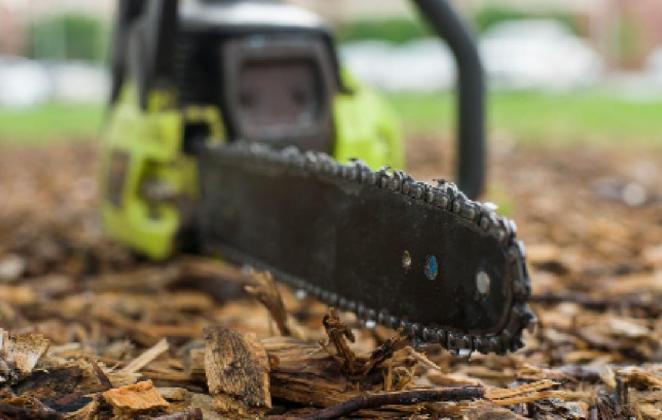STILLWATER, Okla. – Whether Oklahoma weather brings ice accumulation or strong winds, it often leaves behind broken tree branches that need to be cut and removed.
Chainsaws are typically the tool of choice during such property cleanup. Oklahoma State University Extension turf specialist Dennis Martin said the machines deserve an extra level of respect and safety. Not only is the preparation of the saw important, but also the personal preparation of the saw handler.
“Chainsaws can be extremely dangerous if not used properly,” Martin said. “As with any equipment, chainsaws can only be used efficiently and effectively if safety and protection guidance is heeded.”
OSU Extension provides safe chainsaw operations guidance online, as well as a wide range of other helpful storm damage response tips.
Martin’s turf interests often bump into trees, so he’s developed a healthy respect for saw operations. He agreed with fact sheet authors to start with proper perspective: Match the saw to the job.
The size of the chainsaw should be determined based on the type of cutting. For example, small, lightweight chainsaws, generally weighing less than 10 pounds, are best for pruning and cutting small trees, whereas saws weighing 15 pounds or more, with up to 20-inch cutting bars, are suitable for large trees. The weight of the saw is also important for efficient cutting, as heavy saws lead to extreme fatigue if they are used for a long period of time.
Before starting up the saw, however, Martin urges users to read the operations manual. As tedious as it may seem, a little bit of reading can save a lot of frustration and pain. Also, many reputable, commercial dealers offer online training courses specific to their branded products.
John Long, OSU Extension agricultural machinery systems specialist, said proper clothing is also vital to safety as well as efficiency. The need for goggles is obvious because wood chips will fly everywhere. Ear protection likewise is needed to protect eardrums from the loud machines. Clothes should not be so loose that they become tangled in obstructions. And thick gloves should not make grasping and manipulating objects difficult. Both men warned against clunky shoes that offer so much heavy protection that they create movement challenges around fallen branches.
Whenever a chain is being sharpened, gloves should be worn or a rag placed over the chain to protect hands from the sharpened cutters. A sharp chain is only effective if there is proper chain tension and lubrication – too loose a chain will derail, too tight a chain will bind.
Long agreed with Martin about the importance of reading the operations manual, which typically will also outline how to sharpen the saw’s chain. The recommended filing and depth guides are essential to assure the proper angle on the cutters and cutting depth for maximum cutting efficiency.
Finally, once the cutting is complete, there are some recommended steps for proper storage of the saw, beginning with stopping the engine and draining the fuel tank in a safe area. The engine should then be restarted and run at idle to remove the remaining gas from the engine. The chain can be removed and stored in a container of oil and the spark plug wire also should be disconnected to reduce the possibility of accidental starting. Long said he prefers electric chainsaws for that reason, preferably battery-powered to eliminate the risk of cutting the cord.
Following such procedures will allow those with tree and limb damage to get their property back to normal in a safe manner.

